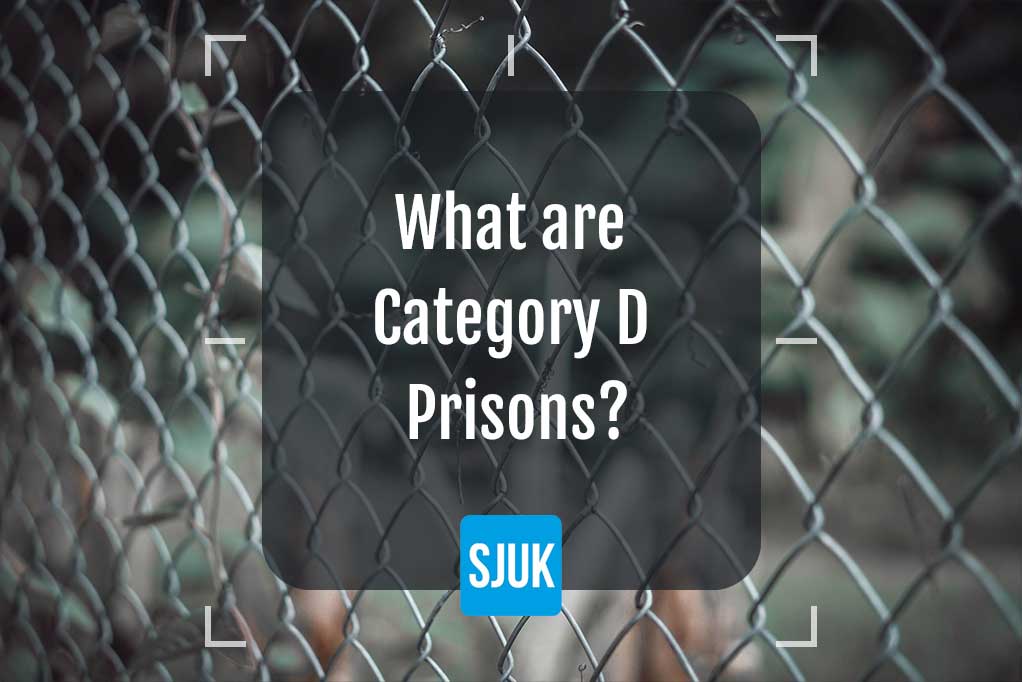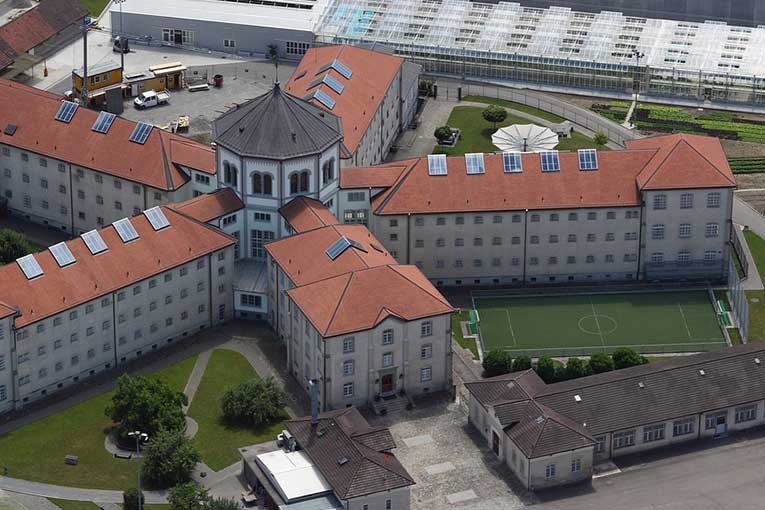
Prisons serve as pivotal components in the intricate web of the UK’s criminal justice system, each designed with specific objectives in mind.
Within this diverse spectrum of correctional facilities, Category D prisons carve out a unique niche.
Delving into the intricacies of their role and distinctive characteristics provides valuable insights into the nuanced workings of the UK’s justice system.
From high-security establishments to those emphasising rehabilitation, each category contributes to the multifaceted approach employed by the UK in its pursuit of justice and societal reintegration.
This article focuses on unravelling the specifics surrounding Category D prisons, offering a comprehensive view of their purpose and impact.
Table of Contents
Toggle
The United Kingdom’s prison system employs different types of prisons to effectively manage a diverse array of prisoners.
These categories, ranging from A to D, reflect the varying levels of security and rehabilitation focus.
Category A prisons are designed to hold individuals considered the most dangerous and likely to escape.
These facilities implement stringent security measures, including high walls, electronic surveillance, and limited prisoner movement.
Category B prisons house individuals requiring a lower level of security than Category A.
They often serve as local facilities, detaining prisoners who are either awaiting trial or serving short sentences.
Category C prisons focus on training and resettlement.
Prisoners in these facilities are considered unlikely to escape, and the emphasis shifts towards preparing them for reintegration into society.
Security measures are less strict than in Category A or B.
At the lowest end of the security spectrum, Category D prisons provide a more open environment.
These institutions prioritise rehabilitation, offering prisoners greater freedom within the prison grounds.
They often serve as transitional spaces for individuals nearing the end of their sentences.
Separate from the A to D categorization, women’s prisons house female offenders.
These facilities are designed to address the unique needs and challenges faced by women in the penal system.
Catering to individuals under the age of 18, young offender institutions provide a specialised environment for juvenile offenders.
These institutions aim to balance containment with rehabilitation, recognizing the developmental needs of young offenders.
In the spectrum of the UK’s prison system, Category D prisons hold a unique position as open institutions designed to prioritise rehabilitation and reintegration.
Here’s a closer look at their characteristics and functions.
Category D prisons stand out for their explicit focus on rehabilitation rather than strict containment.
Prisoners in these facilities are considered to pose a lower risk to society, and the goal is to facilitate their successful reintegration into the community.

Compared to higher-security categories, Category D prisons implement less stringent security measures.
While security remains a priority, the emphasis shifts towards fostering an environment that encourages personal development, vocational training, and educational programs.
Prisoners in Category D prisons often enjoy more freedom and movement within the facility.
This includes the opportunity to engage in work programs, educational pursuits, and, in some cases, even external employment or community activities.
The idea is to gradually acclimate individuals to a less confined and more independent lifestyle.
One of the primary objectives of Category D prisons is to prepare individuals for successful reintegration into society.
This involves providing them with the skills, mindset, and support needed to lead law-abiding lives once they complete their sentences.
Category D prisons often serve as transitional spaces for individuals nearing the end of their sentences.
The gradual reduction of security measures allows prisoners to adjust to the expectations and responsibilities they will face upon release.
Some Category D prisons actively engage with the local community, fostering partnerships that can facilitate the reintegration process.
This community involvement may include initiatives like work-release programs, where prisoners contribute to local projects or businesses..
The utilisation of Category D prisons is rooted in the philosophy of rehabilitation.
For certain offenders nearing the end of their sentences, these open facilities offer a transitional phase.
Prisoners in Category D prisons often participate in work-release programs, community service, and other constructive activities to facilitate their reintegration into society.
Category D prisons are strategically designated to accommodate specific types of offences and individuals posing a lower risk to society.
Here’s a closer look at the crimes for which Category D prisons are typically employed in the UK.
The primary demographic housed in Category D prisons consists of individuals convicted of non-violent offences.
These could range from financial crimes, such as fraud and embezzlement, to regulatory violations or property-related offences.
The absence of violent tendencies in these offenders is a key factor in their placement in a lower-security environment.
Category D prisons often serve as the incarceration venue for those convicted of white-collar crimes.
Offences related to business, finance, or professional conduct—where the harm inflicted is typically financial rather than physical—align with the rehabilitation-focused approach of these facilities.
Prisoners convicted of insider trading, corporate fraud, or other similar offences may find themselves in Category D prisons.
Individuals convicted of minor drug offences, especially those categorised as non-violent and without extensive criminal histories, may be placed in Category D prisons.
The emphasis here is on treating addiction issues and addressing the root causes of drug-related crimes, aligning with the rehabilitative goals of these facilities.
Offences against property, such as theft or burglary, where violence is not a primary feature, are often grounds for placement in Category D prisons.
The classification considers the nature of the crime and the perceived risk an individual poses to public safety.
Beyond the nature of the offences, Category D prisons are designated for prisoners assessed as low-risk to society.
This assessment considers factors like the individual’s criminal history, behaviour during incarceration, and the likelihood of reoffending.
The intent is to allocate higher-security resources to those with a more immediate threat potential, ensuring an efficient use of penal system resources.
Category D prisons bring several advantages to the table, focusing on rehabilitation, community reintegration, and the reduction of recidivism.
Here’s a detailed breakdown of these benefits.

Category D prisons are designed with a distinct emphasis on rehabilitation.
Prisoners housed in these facilities are provided with access to various educational programs, vocational training, and work-release opportunities.
This focus aims to equip individuals with the skills and knowledge necessary to reintegrate successfully into society upon completing their sentences.
By addressing the root causes of criminal behaviour, the penal system strives to transform offenders into contributing members of the community.
As individuals in Category D prisons approach the end of their sentences, they often engage in community service as part of their reintegration process.
This involvement allows them to contribute positively to society and serves as a transitional phase before their complete release.
By participating in activities that benefit the community, prisoners can rebuild a sense of connection and responsibility, fostering a smoother transition back into mainstream society.
One of the overarching goals of Category D prisons is to reduce the likelihood of reoffending.
Through a combination of rehabilitation programs, community engagement, and a gradual easing back into society, these facilities aim to break the cycle of criminal behaviour.
By addressing the underlying issues that contribute to criminal activities, such as lack of education or job skills, Category D prisons seek to empower individuals to make positive choices post-release.
Category D prisons often adopt a more individualised approach to prisoner management.
Recognising that each offender is unique, these facilities tailor rehabilitation programs to meet the specific needs of the prisoners.
This personalised approach allows for a more targeted intervention, addressing the factors contributing to criminal behaviour on an individual level.
By reserving Category D facilities for individuals convicted of less severe offences and assessed as low-risk, the penal system optimises its resources.
Higher-security institutions can then focus on those with a higher potential for harm, ensuring that security measures align with the perceived risk.
This resource efficiency enables a more strategic allocation of staffing, funding, and other resources within the penal system.
While Category D prisons offer distinct advantages, they also encounter challenges that necessitate careful management and strategic solutions.
Here’s an in-depth look at the challenges associated with the operation of Category D facilities.
The unique characteristic of Category D prisons, emphasising rehabilitation in an open environment, introduces challenges in maintaining security.
Unlike higher-security prisons with more stringent controls, the open nature of Category D facilities means greater movement and interaction among prisoners.
Balancing the need for rehabilitation with the imperative of security requires a delicate equilibrium.
Striking the right balance is essential to prevent incidents that could compromise the safety of both prisoners and staff.
Determining the suitability of individuals for Category D placement demands meticulous risk assessment.
Identifying those who pose minimal risk to public safety requires a comprehensive evaluation of their criminal history, behaviour during incarceration, and potential for successful rehabilitation.
Inaccurate risk assessments could lead to inappropriate placements, potentially placing the community at risk.
Striking a balance between providing rehabilitative opportunities and safeguarding against potential risks is an ongoing challenge for those responsible for the categorization of prisoners.
Category D prisons may face constraints in terms of resources, which can impact their ability to provide comprehensive rehabilitation programs.
Limited staffing, budgetary constraints, and insufficient infrastructure may hinder the implementation of effective rehabilitation initiatives.
Overcoming these resource limitations requires creative solutions and strategic prioritisation to ensure that prisoners receive the necessary support for successful reintegration into society.
The challenge lies in optimising available resources to maximise their impact on the rehabilitation outcomes of individuals in Category D prisons.
The open nature of Category D prisons can lead to public scrutiny and concern.
Misunderstandings about the purpose and functioning of these facilities may contribute to negative perceptions.
Effectively communicating the rationale behind Category D prisons and the measures in place to address security concerns is crucial in managing public expectations and gaining community support.
Balancing a rehabilitative focus with the need for maintaining discipline poses a challenge in Category D prisons.
Striking a balance between offering freedoms to encourage rehabilitation and implementing measures to prevent misconduct or abuse of privileges is essential.
Establishing and enforcing clear rules within the open setting is crucial to ensure a safe and conducive environment for both staff and prisoners.
Category D prisons occupy a distinct niche within the penal system, embodying the balance between rehabilitation and confinement.
While they offer a path toward reintegration for certain offenders, careful consideration and risk assessment are essential to address the challenges associated with their operation.
Understanding the dynamics of Category D prisons contributes to a holistic view of the broader criminal justice landscape.